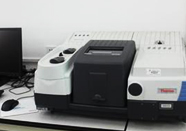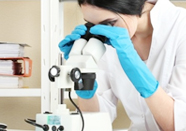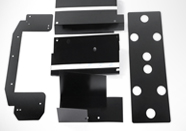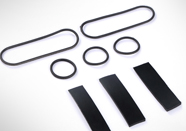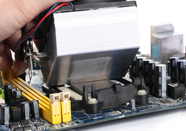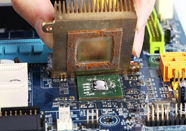LED total solution
LED is called the fourth generation lighting source or green light source, with the characteristics of energy saving , environmental protection, long life, small size, etc. It can be widely used in various fields, such as indication, display, decoration, backlight, ordinary lighting and urban landscape and other fields. Around LED development, the world’s enterprises have launched fierce competition. But LED heat dissipation is an urgent problem to be solved!
The reason of LED fevering is because the electric energy doesn’t
completely convert into luminous energy, but partly convert into heat.
At present time, LED’s light efficiency is just 100lm/W, and its
photoelectric conversion efficiency is about 20%-30%. That means about
70% of electricity is turned into heat.
Specifically, LED junction temperature is caused by two reasons:
1. The internal quantum efficiency is not high. That is, in the
recombination between the electron and the hole, it cannot produce 100%
photon, which is usually called “current leakage”, so that the carrier
recombination rate in the PN area is decreased. Current leakage
multiplied by the voltage is the power of this part, which is invert
heat energy. But, this part is not the main component, because the
internal photon efficiency is close to 90%.
2. Internally generated photons cannot all be emitted into the chip and finally converted into heat. This is the main part. Because, at present, this external quantum efficiency is only about 30% and most of them are converted into heat.
Although the luminous efficiency of incandescent light bulb is very
low, about 15lm/W, almost all electric energy can be converted into
light and can be emitted outside. And most of radiation energy is
infrared, so the luminous efficiency is low. Therefore, the heat problem
is exempted.
LED heat dissipation has been attached more and more importance. The
reason is that the luminous decaying or the service life of LED is
directly related to its junction temperature. The worse heat
dissipation, the higher junction temperature and the shorter service
life.
The LED chip is characterized by very high heat quantity in a very
small space. LED’s heat capacity is small, so it is necessary to carry
the heat out as fast as possible. Otherwise, it will produce very high
junction temperature. In order to bring the heat out of the chip as much
as possible:
We have developed some targeted products for LED industry. These
products not only have thermal conductive property, but also have
additional properties which are convenient for customers to use.
BN-G450 Thermal grease—fine quality paste, easy to be operated, not drying, high thermal conductive.
BN-TAPE100 A kind of acrylic acid thermal adhesive tape—better thermal
conductivity(0.8W/m.K) than that of 3M equivalent material, in strong
viscosity, widely used for bonding PCB board and radiating substrate in
LED.
BN-RT100/BN-RT100 Potting sealant—good fluidity and thermal conductivity, widely used for potting LED bulbs.
BN-SR200A kind of twin-component transparent potting sealant—good light
transmittance, long-term reliability on anti-yellowing, used for
potting LED lamp beads, playing a role in waterproofing and moisture
proofing.
BN-FS150SP/GF Thermal pad—besides elasticity, added fiberglass or
silicone cloth as enhanced carrier, so in high strength, and can be
designed into single-side viscidity to increase adhesion between PCB
board and radiating substrate.
Therefore, in addition to changing LED design, it is also necessary to adopt appropriate thermal interface materials to improve heat transfer and heat conduction efficiency.








